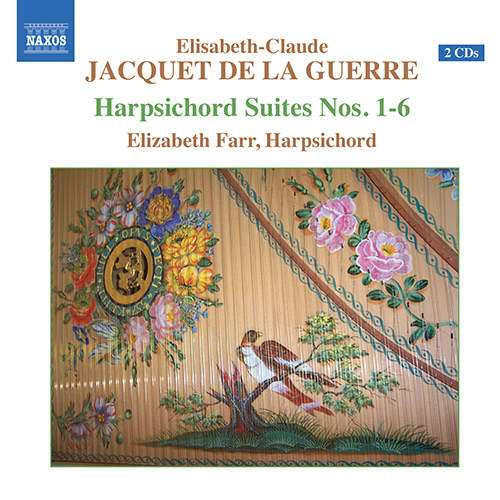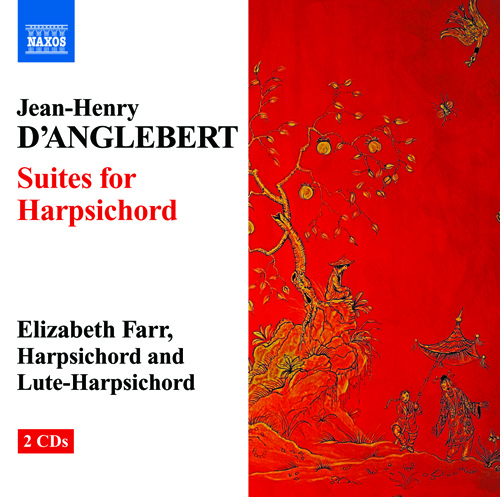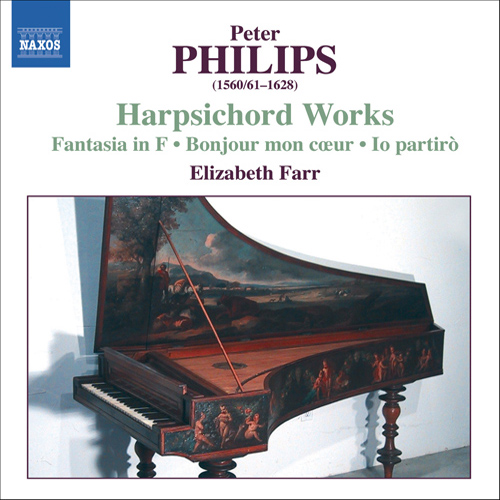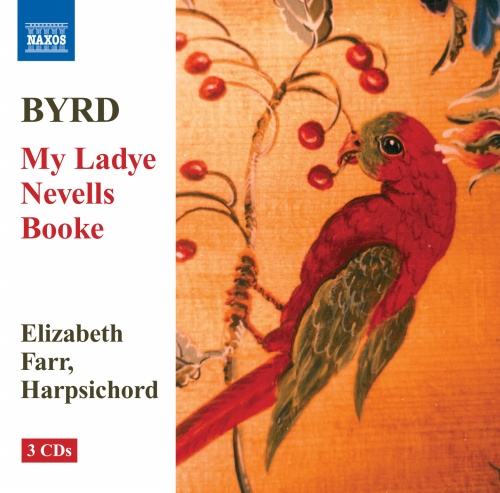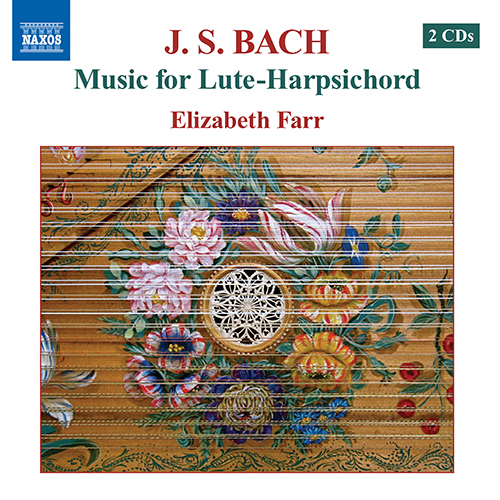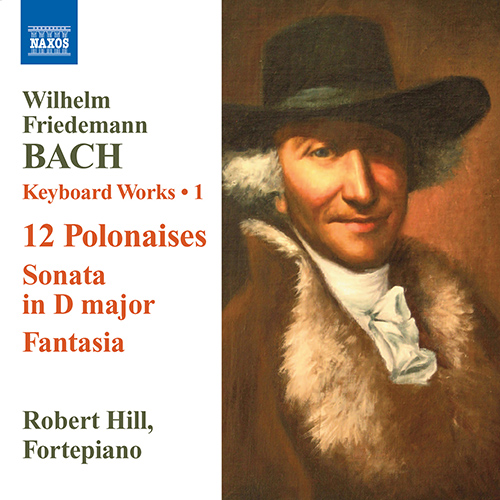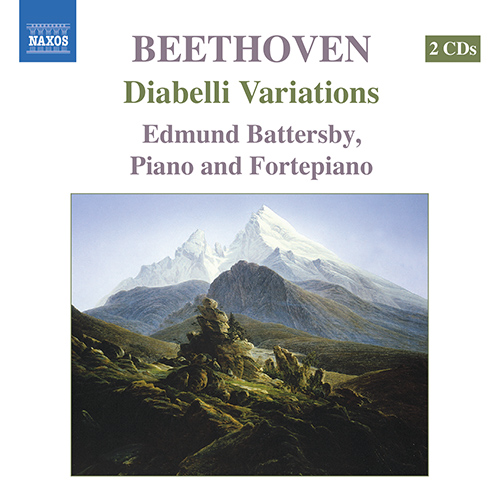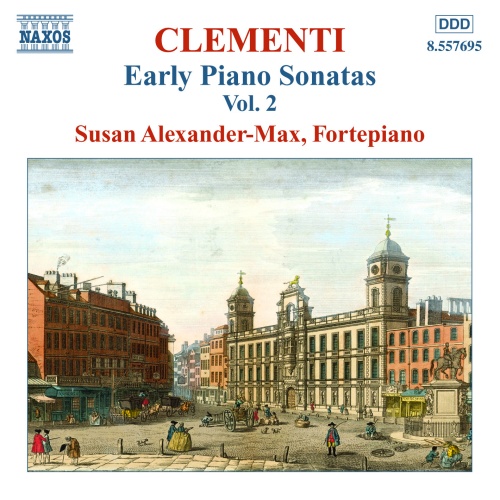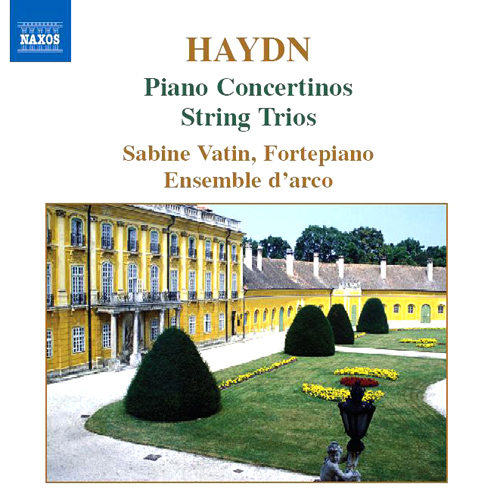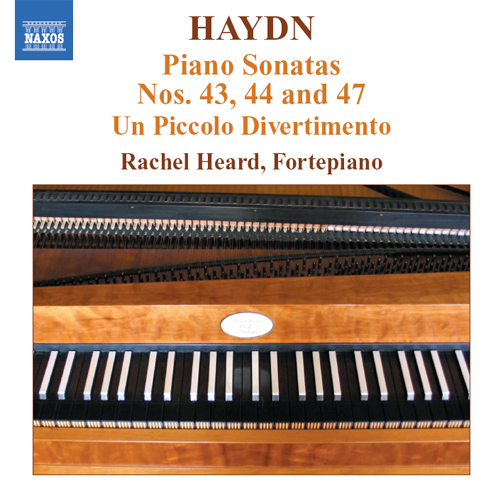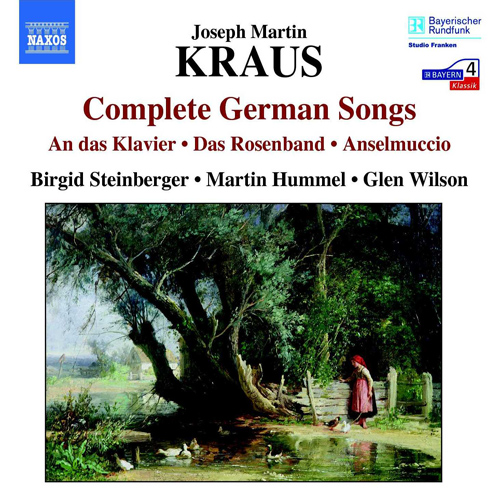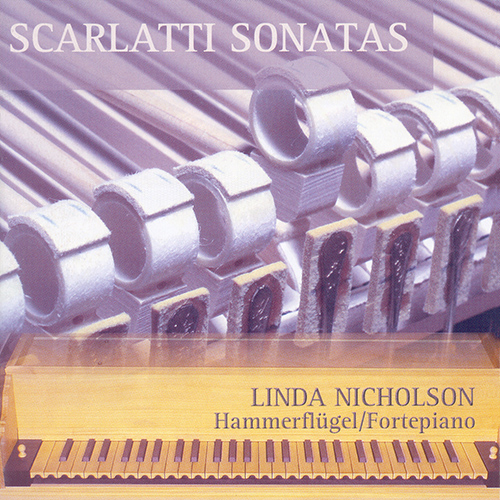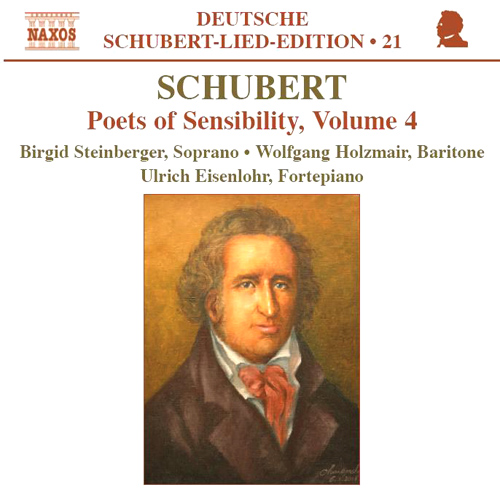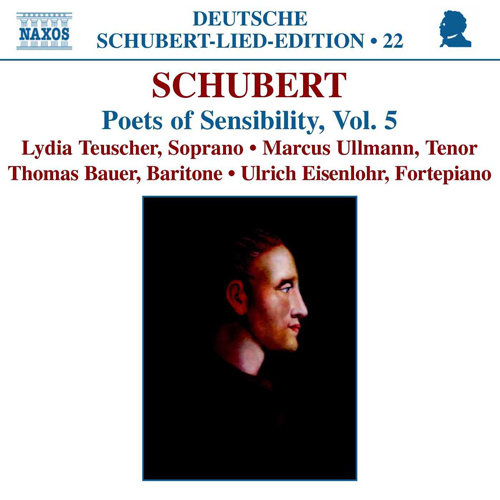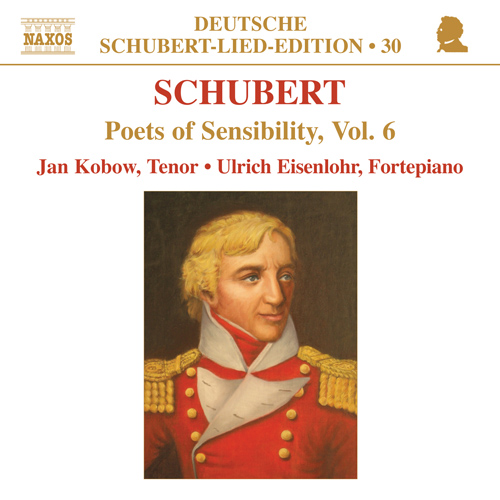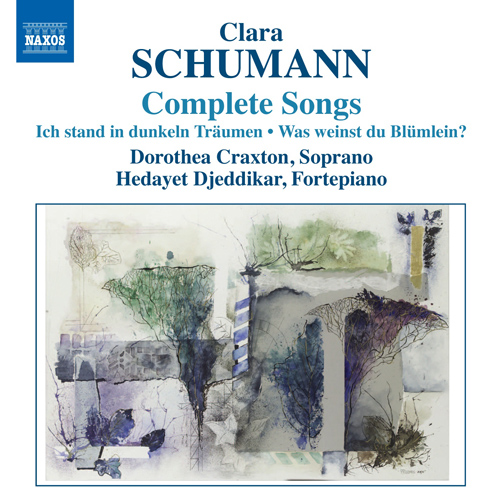Elizabeth Farr: My Passion Is My Profession
March 09, 2009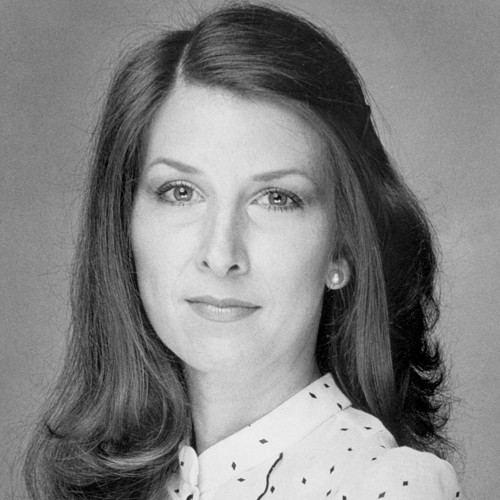
Twice a winner of the prestigious Preis der deutschen Schallplattenkritik for her Naxos recordings, Elizabeth Farr is on the faculty of the University of Colorado where she teaches harpsichord and organ, conducts the Early Music Ensemble, and offers classes in performance practices and basso-continuo playing. She took time out of her busy schedule to discuss with Stephen Schafer why music is both her passion and her profession.
STEPHEN: What draws you to the 17th and 18th century keyboard repertoire? Did anyone in particular inspire to explore this repertoire? Who are your rôle models as a musician?
ELIZABETH: The sound of the music is the draw. It’s a captivating sound that relies on recognizing and acknowledging small details so that, when interwoven like the colorful threads of a tapestry, they can join together to present a distinctive and meaningful whole. I continually marvel at the creativity of composers of this era, and the individuality they exhibit within such a distinctive style.
I have always been attracted to nuance in music, the shading and expression of melody and harmonic inner voices. In this way, much of the inspiration for knowing this repertoire better has come from within—it’s fascinating. But I have also been very fortunate to have amazing teachers. The joy and discovery of music have been very important in my life, probably in large part thanks to each one of them.
Although I admire a number of keyboardists, for me some of the best rôle models come from outside of my particular musical discipline. Anyone who uses the sound of an instrument (or voice) to compellingly draw me into the music and make me feel its affect and believe its communication is a candidate. I find inspiration in music of many periods and styles, but obviously I have a preference.
STEPHEN: Could you tell us a little about your Naxos recordings, each of which is particularly interesting (ie. not the ‘obvious’ choices, such as the Bach Partitas/Suites or Scarlatti sonatas)? Have you a special mission to revive less well known repertoire or is there something else that’s special about your choices of Byrd, Bach, D’Anglebert, de la Guerre and Philips?
ELIZABETH: This is an interesting question to answer. Naxos has a rôle in ultimately choosing what I record. So while many of the ‘obvious choices’ have been on my submitted lists, there have also been other choices listed that for some listeners are less well known. Naxos wanted to add these composers to their wonderful music library. The harpsichord has a large, varied repertoire of extremely fine music from which to choose.
Every bit of repertoire that I have recorded is quite special. Each time we go through the selection process, the final choice has seemed to me the perfect one for that moment.
To begin with, Jacquet de La Guerre was very wonderful [8.557654–55]. She captures our fancy today in part because she was an extraordinary woman in a man’s world. Her music is capable of power and gentleness, and is very individualistic and exquisitely beautiful.
D’Anglebert [8.570472–73], with whom Jacquet de La Guerre overlaps in time, held a very important post as harpsichordist in the French court. One of the greatest challenges in his music is playing the many ornaments persuasively, both ornament symbols and melodic ornamentation that is fully notated. Playing their ten collective suites in concentrated periods of time has given me a greater understanding of the language of ornamentation, and how best to add ornaments in repeated sections of binary forms. D’Anglebert’s music is stunningly beautiful, exotic, and noble.
Peter Philips’ music has long been dear to me [8.557864]. When the opportunity arose to make the first recording featuring an Italian single built in 1658 by Jerome de Zentis, I knew that the spoken quality of that harpsichord would perfectly match Philips’ textually inspired music. Philips may have studied as a young man with Byrd, and Byrd was a prominent musician in the English court.
For the larger undertaking of recording Byrd’s important collection, My Ladye Nevells Booke [8.570139–41], I decided to use more than one harpsichord. This was the first of my recordings to feature lute-harpsichord, along with the de Zentis and two Flemish-style harpsichords—one of which includes a 16-foot stop. Matching each composition to its most appropriate harpsichord was challenging and enjoyable.
After having such a marvelous experience with the lute-harpsichord, it seemed completely natural to record JS Bach’s lute works [8.570470–71]. Whether the works are solely intended for lute-harpsichord or lute is not problematic—both instruments are viable. Having played most of this music on conventional harpsichords over the years, I jumped at the opportunity to experience these works anew at the lute-harpsichord.
STEPHEN: What do these composers ‘have to say’ to us today?
ELIZABETH: Well, what don’t they say? Their music is invigorating and calming, beautiful and beguiling, a fascinating testament to their own time and values. I can tell you that when I experience music of this period my breathing changes, my focus increases, and my heartbeat even relaxes at times. Who doesn’t need a bit of that in 2009? My aim is to try and align my performance with what I perceive to be the goals of the music, to exist in the sound world the composers have created, to convey the message.
STEPHEN: You’ve won a number of prestigious awards and your recordings gain excellent responses from the critics. How important are awards and good reviews? Do they encourage you to reach even higher? Have you ever received any truly ghastly reviews or met with negative responses (I’m thinking of Beecham’s unkind quip that ‘the sound of the harpsichord resembles that of a bird-cage played with toasting-forks’, or a similar but even more evocative bon mot attributed to him: ‘the harpsichord sounds like two skeletons copulating on a tin roof.’)
ELIZABETH: Most people enjoy a pat on the back once in a while. So, yes, I feel wonderful when I read a good review of one of my recordings or receive an award, and I appreciate both very much. I suppose the best aspect of that for me is that something about the recording has touched another person.
I’m not sure if reviews or awards make me reach higher, reaching higher is an inner impulse and rightly so. I’m just incredibly happy that my recordings have been well received!
Interestingly, you bring up the flip side of that coin, the negative review. In this instance something about the recording is not sitting well with another person. If the writer is being negative in terms of the harpsichord as a musical instrument per se, it might be that they have a built-in prejudice based on the thin timbre and static quality of some harpsichords they have heard in the past. Beecham’s quip undoubtedly reflects what he honestly heard in a bygone era (imagine the sound, per his quip). I play extraordinarily beautiful instruments made quite recently by Keith Hill, the sound of which has been expertly captured by producer/engineer Wolfgang Ruebsam in every one of my recordings. The audio quality is quite accurate and balanced. Those who still cling to the former point of view, though, should listen to these recordings to see if they hear a difference.
The positive reviews, which appear to outweigh the others by far, consistently speak glowingly about the instruments I’m playing. Any negative comments about the music or my interpretations might reflect the writer’s expectation about how I ought to perform this repertoire, or a preference for later music. The worst aspect for me when this happens is that someone else who reads that review, and trusts the writer’s taste more than his/her own, might not take the opportunity to listen.
Bottom line: we all have opinions and, pro or con, we are all entitled to them.
STEPHEN: Could you tell us about some of the unusual keyboard instruments that you play? Why you like them? How important is choosing the right instrument for the repertoire? We’ve come a long way from Wanda Landowska’s six-cylinder hyper-harpsichords—what choices does a contemporary performer have to make when choosing an instrument? Are there any instrument-makers whose work you particularly admire?
ELIZABETH: My answer to this question centers on Keith Hill. While I am perfectly happy to play lots of different harpsichords, when the choice has been mine it has repeatedly been for harpsichords built by Keith Hill. His instruments are resonant, acoustically well structured, and capable of real expression. And to me, in the most tactile sense, the feeling of playing them coupled to the sound I hear is magical. Just as with any instrument, the player contributes to the quality of the sound but cannot solely create it. Choosing specific harpsichords for each of my recordings is something I have routinely consulted on with Keith. But while we decide to use a certain harpsichord because it will suit the requirements of a particular repertoire, I think listeners will simply appreciate that it is a good sound and that the music can speak with integrity to them via the sound. That’s all that really counts.
As to the unusual nature of these instruments, for listeners the two that most qualify for this distinction are the lute-harpsichord and the harpsichord that includes a 16-foot stop. The latter is a slightly longer and deeper harpsichord case that houses a 16’ stop, two 8’ stops, and one 4’ stop. This particular 16-foot harpsichord also has two buff stops. It was heard in the Byrd recording mentioned above, and will also be heard in two releases that are coming up later this year from Naxos. The lute-harpsichord is a standard size harpsichord that has two 8’ stops strung in gut and a 4’ stop strung in brass, specifications taken from those requested by JS Bach himself in the 18th century.
In addition to these, I have recorded on Taskin and Blanchet style French harpsichords, and a Flemish style instrument after the Ruckers housed in the museum in Colmar, all built by Keith Hill. He also restored the 1658 de Zentis harpsichord already mentioned, an Italian harpsichord with two 8’ stops. By its design, when the 8’ stops are used singly the unused 8’ strings are free to vibrate sympathetically, creating a very resonant effect.
I have been involved in music my whole life—can’t imagine otherwise.
How lucky am I, that music is both my passion and my profession!
STEPHEN: What do you think about performing early music on the piano? What’s lost and/or gained ‘in translation’, so to speak?
ELIZABETH: The answer to this question is difficult to express without stepping on someone’s toes. Before I answer, I want to assure you that I am not a fanatic on this topic.
The primary problems of this repertoire being played on the piano are linked to the sound of the modern grand piano. The timbre is too dark, the continuity of the sound tends to muffle the details and can affect the phrasing, the dynamics are at times either seemingly absent (due to everything being played the same—that can be true at the harpsichord, too) or overdone, and the touch is often either too percussive or dreamy. Tempos are sometimes feeling odd to me as a result, and dynamic effects in extreme ranges of the keyboard occasionally are treated opposite to those that would naturally happen at the harpsichord. The composers who wrote this music had a particular sound in mind, and they wrote very well for the behavior of that sound—a plucked sound.
At the same time, I can easily say that I have heard a number of performances of Baroque music on the piano that I liked very much for some reason or another. It’s the music itself and its communication that I react to first and foremost. A good performance is a good performance. Playing the harpsichord doesn’t make you right, by any means, but it potentially offers one the opportunity to understand the rationale and expression of this repertoire to some greater degree.
Do I think it’s incorrect to play Bach or Scarlatti or Handel on the piano? Not really. Do I want pianists to pretend that they are playing the harpsichord? No, each instrument should be played to its best advantage. Is there any 17th and 18th century repertoire that I consider off limits for pianists? Maybe, but that’s not my decision to make for another person.
STEPHEN – Indeed. Naxos is progressively releasing Domenico Scarlatti’s Keyboard Sonatas played on the piano, and also has a number of CDs of JS Bach’s keyboard works performed on a modern piano.
ELIZABETH: The important thing, and this is the thing I stress when I coach piano students at the University of Colorado, is that I want the player to approach the music from the point of view of the era in which it was composed, to the best of their ability, and devise a way to bring the truest possible communication of the music to listeners. And besides, it is essential that all keyboardists know the wealth of repertoire from this era, even if for no other reason than to understand the stance from which Bach’s sons, Haydn, Mozart, and Beethoven created new styles and began to make use of a new keyboard instrument: the fortepiano.
In my classes, I illustrate my point about music being composed for a specific instrument by playing one of my favorite piano pieces, Schumann’s Träumerei, on the harpsichord. The music is the same, but it just doesn’t sound right. However, since the reverse practice is most often carried out it seems more natural to some of us.
STEPHEN: Apart from performing and recording, you also teach and conduct. How do these fit into your busy schedule? What do you try to impress on your students? What do they give back to you?
ELIZABETH: It is true, my schedule is very hectic, but I’m happy to say that all is well! Performing and recording are my primary focus, and will remain so. I have wonderful students who never cease to amaze and enlighten me with something they do or say, or in the way they apply a concept. Because of my position in the university as a studio teacher and music director of the Early Music Ensemble, I teach other students in addition to those in my harpsichord and organ studios—I coach, often on a weekly basis, string players, wind players, and vocalists. Although I am a keyboardist, I am able to teach them quite a lot about style, sound, and interpretation. And think of the additional music I’m learning, all of which gives me a greater perspective for my own repertoire.
What do I try and impress on my students, well that depends on the student. Teaching is often so spontaneous and quite individualized! I encourage independent thinking, creativity, careful listening, and confidence that are all grounded in preparedness and study. Reading period writings and learning more about Baroque instruments is vital to our study, but it is just the beginning. Learning to produce a beautiful tone on our instruments and working through the issues that confront us in this repertoire are part of the process. I also want string and wind players to become versatile in this period of music, meaning that they should also be able to play stylistically on a modern instrument.
STEPHEN: Is ‘early music’ alive and well at the moment? How important are recordings vs concerts?
ELIZABETH: Personally I would say that ‘early music’ is alive and thriving. Not only is there a lot of activity in this field, the performance level has risen dramatically. The more we continue to move into areas of communicating our large and fantastic repertoires with the zest and passion they correctly deserve, in accordance with the ideals of their era, early music will continue to thrive.
It is difficult to make a distinction between recordings and concerts for me, although the process is certainly different. I thoroughly love both! Playing for sensitive microphones or a living breathing audience, both demand engaging communication.
STEPHEN: What future recordings/concerts are in the pipeline?
ELIZABETH: I have two new recordings for Naxos, which according to the projected schedule will be released in late 2009 and early 2010. The first of these is a 2-CD set of JS Bach’s complete Concerti for solo harpsichord (BWV 972–987) and the Prelude and Fugue in A minor (BWV 894), which is the basis for his later “Triple” Concerto. The second is a 2-CD set of Claude Balbastre’s Pièces de Clavecin, and other harpsichord works of his from manuscript sources. Both of these recordings were performed on the 16-foot harpsichord described above.
STEPHEN: If you could invite anyone, alive or dead, to an ideal dinner party, who would you want to meet and why?
ELIZABETH: Frankly, in spite of the fact that I enjoy cooking, if this is going to be ideal for me as well I’d like someone else to cook—unless we all cook together; that would be fun! There are so many people one could think of to invite. Historical figures, certainly the composers represented on my CDs, could open up windows to the past for us and let us experience what it was like to be alive in that time, let us know what was most important to them, what they cared about, what they wanted to convey. In order to expand the conversation, wouldn’t it be great though to have every person invited from the present day to choose one historical figure, musical or otherwise, for our guest list? In that case, I definitely don’t want to cook—I don’t want to miss a single word spoken.
STEPHEN: Outside music (is there an ‘outside music’?) What do you like to do? How do these activities feed back into your music-making or are they quite separate things?
ELIZABETH: I enjoy reading, but you’re correct when you observe that time is at a premium for a musician. Getting outdoors, either for some exercise or simply to enjoy the beauty of nature, is a welcome change of pace. I used to play golf and tennis, but haven’t had much time for those lately. Time with friends, good food and wine, stimulating conversation, good movies, stealing a few quiet moments by myself to just sit and think—in a way all of these activities are respites from work but of course they are renewal, too. They all inspire imagery, which is very important to how I think about music and teach others. Also, I enjoy writing poetry. And I adore animals.
STEPHEN: What career path might you have taken had you not become a musician?
ELIZABETH: I have been involved in music my whole life—can’t imagine otherwise. How lucky am I, that music is both my passion and my profession!
Elizabeth Farr Biography & Discography
Naxos recordings featuring fortepiano include the following:
